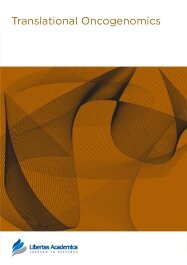

Publication Date: 11 Oct 2006
Journal: Translational Oncogenomics
Citation: Translational Oncogenomics 2006:1 19-31

Multiple lines of evidence implicate over-expression and activation of the androgen receptor (AR) in the progression of prostate cancer (PC) to androgen-independence (AI) and resistance to therapy. The mechanisms leading to AR over-expression are not fully understood but binding of Sp1 to specific Sp1-binding sites in the AR promoter and 5’- untranslated region (5’-UTR) was shown to up-regulate AR transcription. In this work, we further characterized the role of Sp1 in the control of AR transcription and explored its potential as a therapeutic target in androgen-dependent (AD) and independent (AI) LNCaP cells. We identifi ed a pair of new Sp1-binding site in the 5’-UTR of AR which we named ARSp1-3. ARSp1-3 binds Sp1 with higher affi nity than other known Sp1-binding sites in the promoter/5’-UTR and in transfection experiments, the ARSp1-3 reporter showed higher transcriptional activity in AI than in AD cells. Treatment of these cells with nanomolar concentrations of Mithramycin inhibited binding of Sp1 to its binding sites in the promoter/5’-UTR of the AR gene but more specifi cally the binding of ARSp1-3 while other regulatory elements of the AR promoter were not affected. Inhibition of Sp1 binding by Mithramycin decreased the AR transcription and transactivation of PSA reporter constructs. At the lowest concentrations, Mithramycin decreased endogenous AR protein and proliferation of AD and AI LNCaP cells. The combinations of Mithramycin with either paclitaxel or bicalutamide were highly synergistic.
Conclusion: Sp1 binding induces AR transcription in LNCaP cells. The higher affinity of ARSp1-3 for Sp1 may support higher AR mRNA levels in AI than AD LNCaP cells. Mithramycin is a potent and specific inhibitor of Sp1 and AR transcription with potential, at very low concentrations, to enhance the efficacy of hormones or taxane based therapy in patients with recurrent or androgen-independent progression that sustain AR expression.
PDF (1.54 MB PDF FORMAT)
RIS citation (ENDNOTE, REFERENCE MANAGER, PROCITE, REFWORKS)
BibTex citation (BIBDESK, LATEX)
XML
PMC HTML

As an author of a review published in Translational Oncogenomics, I was impressed by the prompt processing and speed of publication. The entire submission, review and publication process was easy, quick and pleasant. The comments from reviewers and associate editor were high quality, scientifically deep and objective. It was a great pleasure to cooperate with such qualified and friendly team. I highly recommend publication in Libertas Academica journals.
Facebook Google+ Twitter
Pinterest Tumblr YouTube